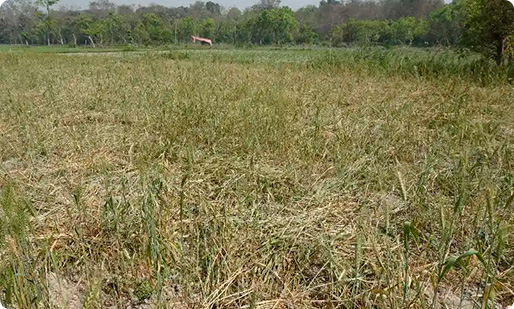A Huge Monocled cobra rescued
13 - Sept - 2022
The local communities, in forest-fringe areas of Valmiki Tiger Reserve, have been witnessing a slow increase in crop raids by elephants and other animals over the last few years. The forest-fringe villages which are affected the most are Bhatujhila and Chakarsen near the Shikaribas river corridor which connects the protected forest areas of India and Nepal. Wild Elephants migrate in search of food from Nepal to India and enter these crop fields during the harvesting period from October to December year after year, as it is much easier for them than foraging food in the forest. Other animals, like Nilgai, Wild Boar, Hog Deer, and Monkeys, also raid the standing crops throughout the year.
The villagers mainly depend on agriculture for their livelihood. Paddy, sugarcane, and wheat are some of the cash crops sown towards the end of May or early June and harvested during the post-monsoon season. During the post-monsoon season, in the forest-fringe villages under the Manguraha forest range, crop damage by wild Asian elephants pushes villagers towards using spontaneous methods to drive them away from their crop fields with the help of the frontline forest personnel. The tools used by farmers are tractors, pipe guns, firecrackers, and flashlights for driving the elephants away from the crop fields. According to them, tractors and burning crackers are the most effective measures used in elephant drives. Until now, the farmers manage to sell the remaining crops at a profitable margin. Thus, no significant number of compensation reports were filed against the crop damages. Hence, there is a need to educate the local communities about the behavior of elephants and provide training to local people on the code of conduct during elephant raids. Improvement of the livelihood and introduction of alternative livelihood options can also develop a positive attitude of the local communities towards elephant conservation. NGOs and Forest Department should act together with the local communities on this rising conflict situation for a sustainable solution.




Name-
Nature environment and wildlife society
A/C No-
0000000000
IFSC code-
0000000000
x